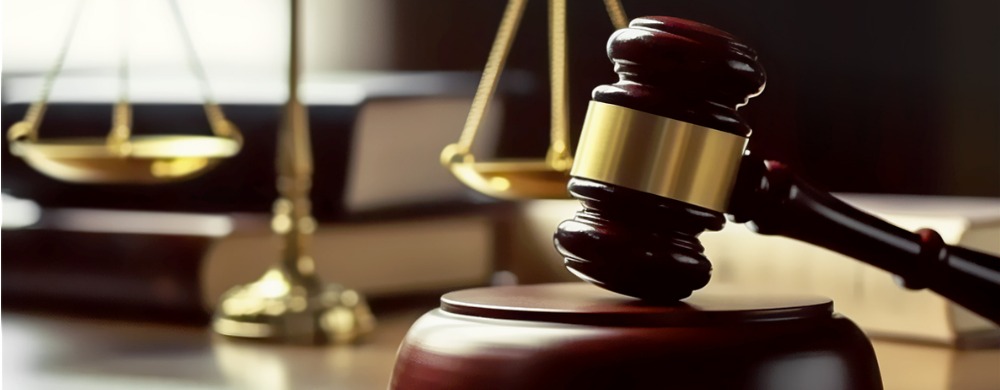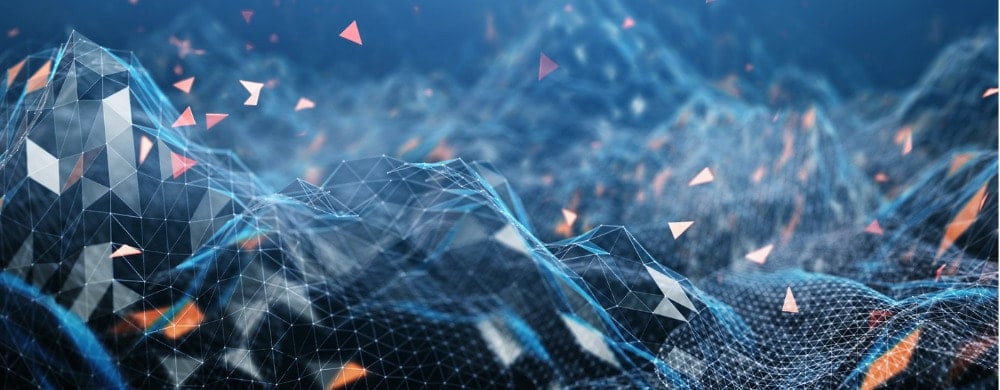Contact us and see what NetOwl can do for you!
How Entity Extraction along with Fuzzy Name Matching Enable Attorneys to Select the Best Expert Witnesses
Entity Extraction, Name Matching, Record Management, Risk Management

Attorneys Need to Evaluate Potential Expert Witnesses
Attorneys trying civil or criminal cases need to make many decisions. One of the most important is which expert witnesses to call.
In making this decision, the strengths and weaknesses of each expert need to be evaluated. His or her litigation history and track record must be carefully analyzed, including, in particular, the positive or negative verdicts and settlements which their testimony contributed to.
An attorney must also determine if their testimony would be assailable, particularly if there is any past professional misconduct – including any disciplinary actions taken or associations with questionable persons or organizations – or if there are any conflicts of interest. In addition, the expertise of the potential expert witness in the relevant area must be beyond any doubt.
Conversely, attorneys also need to assess the expert witnesses for the other side in the same way.
Commercial Expert Witness Databases Have Become a Critical Tool in Vetting Potential Candidates
Given the digital age we’re in, there’s a large amount of unstructured natural language data that needs to be searched in the course of an expert witness investigation, whether in trial transcripts, court decisions, news outlets, social media, etc.
Combing through such large amounts of data in a timely manner is simply not possible without assistance from automated means. To aid in this task, searchable and thoroughly curated databases have come on the scene to provide assistance.
Two AI technologies, Entity Extraction and Fuzzy Name Matching, are of crucial value in helping these databases be more comprehensive, accurate, and up to date.
A Common Workflow that Facilitates the Populating of These Databases
Here is a typical high-level workflow that facilitates the creation and maintenance of an expert witness database:
- In a first step, Entity Extraction processes all relevant unstructured natural language data to identify the individuals and organizations mentioned in those sources, as well as the relationships they have with other entities and the events that they have participated in. A relationship is a connection between entities, such as an attorney who is a member of a law firm, or an employee who works for a corporation. Another relationship is between an attorney and the state(s) where he/she is licensed to practice. An event is something that occurs in the real world, such as a lawsuit or a crime. Individuals typically participate in events playing specific roles, e.g., as perpetrator or victim in a crime event.
- In a second step, Fuzzy Name Matching matches the extracted names against existing records in the database to either identify matches and augment existing information (perhaps there is already some knowledge about this individual under a similar name variant) or to create new records. The fuzzy matching of records consolidates information and facilitates the automatic discovery of connections.
- The extracted relationships and events associated with a name are attached to the data record of the individual who participates in them.
How Entity Extraction Works
Entity Extraction is an AI technology that is able to process very large amounts of unstructured data from media and other sources and identify the key semantic concepts in real time:
- Entities such as persons and organizations.
- An important feature of Entity Extraction is that it recognizes names of previously unknown persons or organizations in unstructured natural language data. By contrast, note that keyword search techniques, which are embodied in such tools as Google, are not suitable to searching for persons and organizations whose names are not known ahead of time.
- Entity Extraction analyzes the contexts in which names appear in the unstructured text data, making use of clues in the surrounding text that indicate not only the presence of a name but also the type of a name. This is useful to identify the type of an ambiguous word such as whether “Jordan” is to be considered as a place or a person name.
- Entity Extraction also recognizes when an individual is described as an expert witness. In a subsequent step, the identified expert witnesses will be used to augment the existing expert witness database whether by adding to existing records or creating new ones.
- Relationships among extracted people and organizations, such as membership in a political group or associations with other people such as the attorneys on the other side in a case. Such relationships are critically important to the evaluation of potential expert witnesses , particularly when a relationship might be a conflict of interest. An attorney must not only have a complete picture of a witness’s employment history and professional associations that he/she has been a member of. An attorney also needs to uncover, for example, any political activities, such as contributions to candidates or PACs, or working on a campaign. Some of the most critical information would not be contained in a curriculum vitae (CV) but could be found in the expert witness’s social media activity.
- Events and the persons and organizations involved, such as negative events like criminal activity or disciplinary procedures. These, of course, are the most damaging information that could come to light about a potential expert witness.
Entity Extraction enables structuring of the information contained in unstructured natural language data. For example, in the case of events, it identifies the nature of the event in accordance with an existing ontology. It also identifies the participants in the event and assigns them a role. This structuring of the information makes searching it much more accurate, complete, and actionable (e.g., to automatically flag an individual).
For instance, an expert witness’s association with an organization may be mentioned in the news, as in this fictional example:
“At their anticipated annual meeting, Dr. Isabelle M. Robertson was appointed honorary chair of the Proud Virginia Foundation.”
Elsewhere there may be additional information about this organization:
“The Proud Virginia Foundation has been decried as a hate group for its inflammatory and racists statements.”
Entity Extraction would extract both the affiliation relationship between Isabelle M. Robertson and the Proud Virginia Foundation from the first example and the description of the organization as a hate group from the second example. The structured information would look like this:
Link Type: Affiliation
Person: Isabelle M. Robertson
Organization: Proud Virginia Foundation
Organization: Proud Virginia Foundation
Descriptor: a hate group
Once this information has been automatically extracted and structured, an attorney researching Robertson as the opposing side’s expert witness can discover Robertson’s connection to a hate group and use this information to perhaps undermine her testimony or have her disqualified by the judge.
For further information, please see Entity Extraction, Relationship Extraction, and Event Extraction.
Entity Extraction also provides other advantages:
- It makes the extracted information verifiable by drilling down to the specific passage that conveys the information.
- It supports link analysis (e.g., to discover a previously unknown connection between a potential expert witness and a questionable person or organization).
- It supports alerts (e.g., newly extracted adverse information can automatically trigger an alert).
- It’s fast and scalable so that it can process large amounts of text in real time.
How Fuzzy Name Matching Works
Newly extracted expert witnesses need to be matched against the existing records in an expert witness database to determine if a new record needs to be created or if the new information can be added to an existing record.
Advanced Fuzzy Name Matching is a Machine Learning-based technology that intelligently matches a name against variants of the name that might occur in a database.
Matching names against an existing database is a challenging task because names of people can vary based on many factors, including:
- Simple misspellings: Hans Morgenstern vs. Hans Morgenstirn
- Use of a nickname vs. the full form of a name: John vs. Johnny
- Presence vs. absence of an initial: John F. Smith vs. John Smith
- Names that sound alike but are spelled differently: Sean vs. Shawn vs. Shaun; Goldman vs. Goldmann
- Name order variants: William Johnson vs. Johnson, William
- Transliteration variants: Abdel el-Sisi vs. Abdul al-Sisi. (A language like Arabic is written in a script different from Latin and also has some sounds that don’t occur in English. When transforming the name from Arabic letters to English ones, differences in spelling frequently arise.)
Of course, these examples are only a small sample of the possible variations. What makes the challenge of matching quite hard is that multiple variations can occur in a single name:
- William Benson Harrison vs. Bill B. Harrison vs. Will Harrison vs. W. B. Harrison vs. Harrison, William vs. Harrison, Bill, etc.
- Sean Berman vs. Shaun Burman
Advanced Fuzzy Name Matching uses a state-of-the-art machine learning algorithm and large-scale, real-world name variant data. This approach automatically learns a collection of intelligent, probabilistic name matching rules from the data. Because the rules are learned from real data, they are not bound by the limitations of humans’ knowledge. They reflect countless name variants that occur in the real world.
In addition, information supplied by the extracted relationships can be used to aid in distinguishing individuals. For instance, different associated license numbers would typically mean these are two different people:
Isabelle M. Robertson, VA Lic. 342095
Isabelle Robertson (OR license 89239)
Adverse event information such as in our example in the previous section would be attached to the individual’s record for review by the client/attorney who requested the search.
The end result is a fully deduplicated and enriched database with all data relevant to a single individual captured in the same record.
Summary
The combination of Entity Extraction and Fuzzy Name Matching helps attorneys select the expert witnesses who are most likely to persuade a judge or jury. It will make the job of attorneys in preparing a case much easier and less prone to error.



